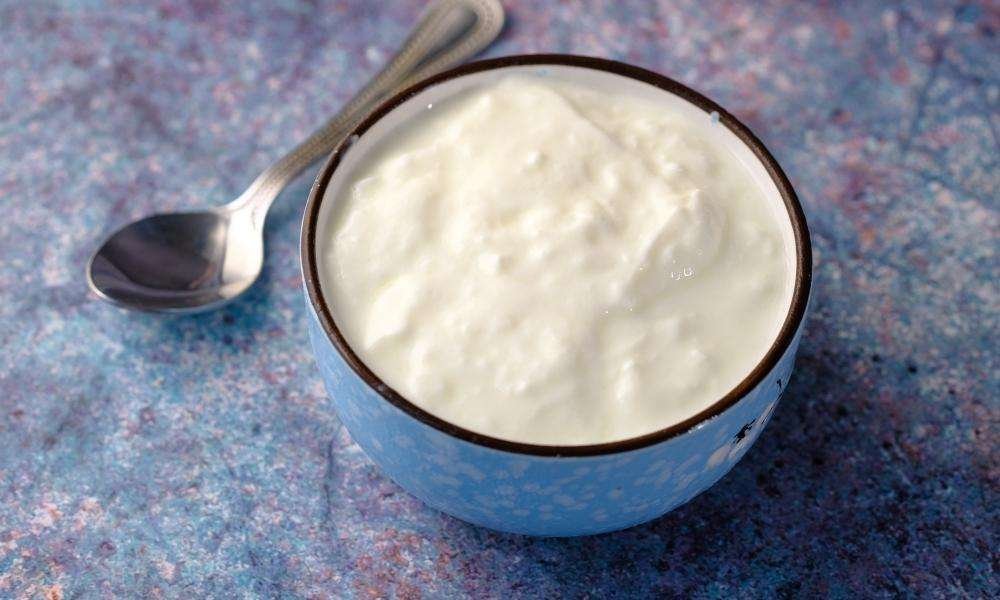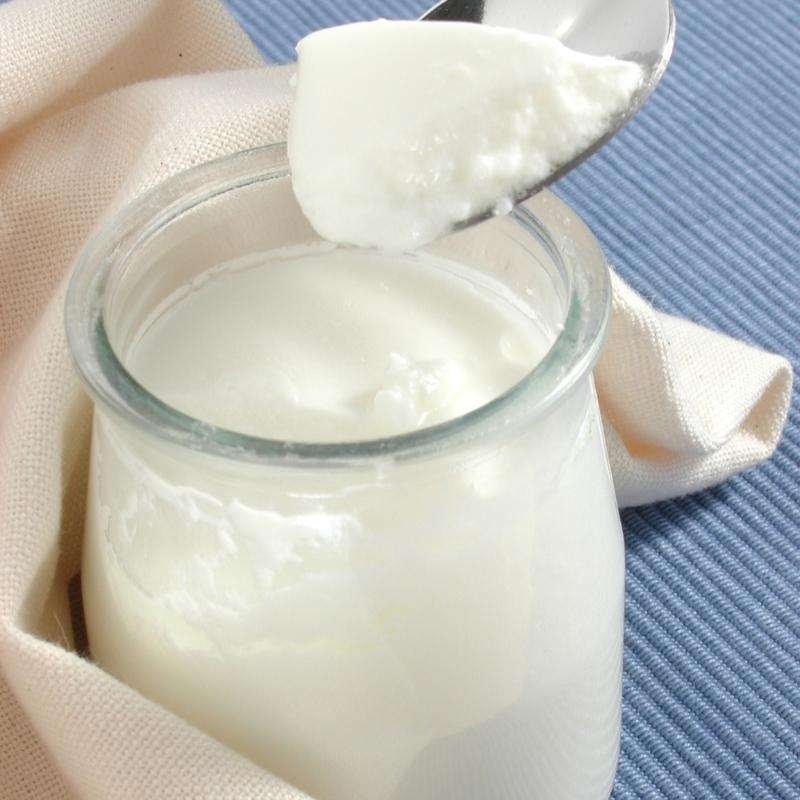Though the jury is still out on whether milk is good for health or not, there are no two ways about the benefit of curd. From improving bone health to aiding in digestion, the nutritional benefits of curd are plenty. Let us delve further into the facts about curd nutrition, calorie count, benefits, tips to make it at home and also whether you should have it every day or not.
Curd Nutrition Facts
According to USDA, the nutritional facts of 100 gm of curd is as follows-
| Nutrient | Amount Per 100 gm |
|---|---|
| Calories | 98 Kcal |
| Total Fat ( Saturated fat) | 4.3 gm ( 1.7 gm) |
| Cholesterol | 17 mg |
| Protein | 11 gm |
| Carbohydrates | 3.4 gm |
| Sodium | 315 mg |
| Potasium | 104 mg |
| Calcium | 83 mg |
| Phosphorous | 159 mg |
| Zinc | 0.4mg |
| Vitamin C | 0 |
| Water | 79.8 g |
However, when you look at the Indian standards and the nutritional values declared by the manufacturers, they vary from what is mentioned above. Let us first take a look at the standards prescribed by the Ministry of Food Processing in India.
Nutritional Standards of Curd Prescribed by MFPI

Standards are prescribed per 100 gm of whole milk curd and skim milk curd and they are as follows-
| Components | Whole Milk Curd | Skim Milk Curd |
|---|---|---|
| Water | 85-88 gm | 90-91 gm |
| Fat | 5-8 gm | 0.05- 0.1 gm |
| Protein | 3.2-3.4 gm | 3.3-3.5 gm |
| Lactose* | 4.6-5.2 gm | 4.7-5.3 gm |
| Lactic Acid | 0.5-1.1gm | 0.5-1.1 gm |
Further, according to Consumer Voice reports, SNF ( Solids Not Fat) which includes all solids like protein, lactose, vitamins, and minerals should be 8.5% for curd made from toned milk and 9% for curd made from double-toned milk. You also notice that the calorie content of most of the store-bought curds are 60-65 Kcal per 100 gm.
When it comes to other components like saturated fat, whey and cholesterol, the lesser the better.
Protein In Curd
As mentioned, curd contains around 3-3.5% protein. The protein in curd and milk is mainly whey and casein. Whey is the yellow water you typically find in curd. It contains 90% water and 10% solid. The solid content in whey comprises whey proteins, lactose, hormones, growth factors, enzymes, vitamins, and minerals. Out of this, whey protein is about 38%.
Casein makes up around 80% of cow milk protein; hence, it is the same in curd. Casein is what imparts the white colour and allows curd and milk to have a high level of soluble calcium.
Carbohydrates In Curd
Milk and curd contain a moderate quantity of carbohydrates. Lactose is the major component of carbohydrates in curd. In most Indian curd brands, carbohydrate content varies from 4.6 to 6.5%.
Vitamins and Minerals In Curd
Curd is a rich source of calcium and phosphorous. It also contains minerals like potassium, sodium, zinc, copper, manganese, Selenium and Fluoride.
Though curd doesn’t contain any Vitamin C, it is rich in Vitamin B ( thiamin- vitamin B1, riboflavin- vitamin B complex, niacin- vitamin B3, pantothenic acid- vitamin B5, vitamin B6, folate- vitamin B9 and B12), choline, betaine, retinol ( vitamin A), carotene beta, vitamin A IU, Vitamin D etc.
Fat In Curd
The information regarding fat content is a bit contradicting. While MFPI suggests a fat percentage of 5-8 in curd, Consumer Voice says curd from double-toned milk should have 1.5% fat and from toned milk should have 3% fat. Even when you look at the nutritional label on curd packets, you find most of them have around 3% fat content.
Out of this saturated fat makes up around 1.9%. But the lower the better as it increases total and LDL ( bad) cholesterol levels. It is found that Nestle acti+ Probiotic Dahi has a comparatively lower saturated fat content of 1.2%
Related reading: How To Make Ghee From Milk?
Is Curd Good For Weight Loss?
Being a nutrient-dense food rich in protein, curd can be helpful in weight loss if consumed in moderation. It can help feel full. Moreover, probiotics in it improve digestion and metabolism.
Controlled trials have shown a positive relationship between curd consumption and the prevention of weight gain and obesity. Epidemiological studies ( studies on the human population) have also associated curd consumption to lower waist size, lower body fat and BMI.
Best Brands of Curd According To Consumer Voice Reports

The latest consumer voice report on curd ( Dahi) was published in 2021. They test to ensure the curd meets the prescribed nutritional standards. Further, they test the percentage of calcium, phosphorous, whey, lactic acid and also the presence of heavy metals like arsenic, lead and mercury.
For the report, they tested 11 brands. The plain curd brands are Ananda Thick & Tasty, Paras, Britannia Daily Fresh, Amul Masti, Mother Dairy Classic, Gowardhan Rich & Thick, Nestle A+ Nourish, Vita, Patanjali, Nova, Madhusudan. The probiotic curd included Mother Dairy Advanced Probiotic and Nestle A+Actiplus Probiotic.
The key findings are the following-
- The top plain curd is Ananda and the best in the probiotic category is Mother Dairy Advanced Probiotic.
- All brands except Madhusudan, Patanjali and Nova fulfilled requirements specified in the national standards.
- Nova and Patanjali did not meet the minimum fat percentage required.
- Paras had the highest protein content of 4.9%
- Madhusudan had the highest calcium and phosphorous content.
- Saturated fat was the lowest in Nova
- Cholesterol was the lowest in Nova and highest in Govardhan
- Madhusudan had lead content of 0.07 ppm which exceeded the FSS regulation of 0.02 ppm.
How To Make Curd At Home?
Curd is produced by fermenting boiled milk by bacteria known as Lactobacillus. These bacteria convert the sugar in the milk to lactic acid which causes milk to curdle and thus form curd.
In a commercial setup, a starter culture containing Lactobacillus is added to the pasteurized milk and incubated at 42 °C plus or minus 2°C for 4-6 hours till pH becomes 4.7+ or – 0.5.
However, at home, we use curd or buttermilk from the previous day as a starter culture for fermentation. Here is the step-by-step method for making curd at home.
- Boil milk for 5-10 minutes at a low flame. The water content in the milk reduces when you boil it for a longer period. This helps make thicker curd.
- Bring the milk to a lukewarm temperature. If the temperature is too high, the bacteria die and as a result, milk won’t turn into curd. And if it is too cold, the bacteria won’t initiate fermentation.
- Take 1-2tablespoons of curd or buttermilk from the previous day and whisk it thoroughly.
- Add the whisked curd to the milk and stir it thoroughly to ensure the bacteria gets distributed throughout the mixture.
- Pour the mixture into a container and close it with a lid. But, ensure it is not airtight. You could also add a green chilly to the mixture as it aids in fermentation.
- If you live in a cold place, keep the mixture in the oven overnight. Else, leave it on the countertop.
Thick curd would be ready the next day!
How To Make Curd Without Curd?
Often, you may not have a starter culture of curd from the previous day to make curd. In such cases, you need to look for other sources of lactobacillus bacteria for fermenting milk to curd. One such source is green or red chilli. To make curd, add 2-3 green or red chilli with the stalk to a cup of lukewarm milk. Close it with a lid ( do not make it airtight) and keep it in a warm place for 10-12 hours or overnight. If you live in a cold place, preheat the oven for 2-3 minutes and keep the mixture in it. The next day, thick-set curd will be ready.
Which is better? Homemade Curd or Store-Bought Curd?
According to the Consumer Voice report, store-bought curd is richer in nutrition. As they are manufactured according to the prescribed standards, the SNF content would be around 10%. But, in homemade curd, the SNF content is usually 8-9%. Further, as homemade curd uses culture from the previous day, it can deteriorate over a period of time and taste too could change.
You might have noticed homemade curd gets sourer over a period of time. Further, the consistency and texture aren’t uniform either. But a study reports the level of probiotics is found to be comparatively higher in homemade curd.
Benefits of Curd

Some of the significant benefits of consuming curd are-
Improved Gut Health
Being rich in probiotics, curd improves gut health by nourishing the good bacteria in your gut. As a result, it reduces indigestion, artburn, antibiotic-associated diarrhoea and symptoms of irritable bowel syndrome like pain, bloating, flatulence etc.
Increase Bone Strength
Being a rich source of calcium, phosphorous and other minerals, consumption of curd is positively linked to improved bone density and reduction in bone loss. Other researchers also point out that milk intake during childhood reduces the chances of osteoporosis in old age.
Protects From Weight Gain
Being rich in probiotics and nutrient-dense food, curd protects the body from weight gain. The study shows an inverse relationship between yoghurt consumption and changes in waist circumference, changes in weight, risk of overweight or obesity, and risk of metabolic syndrome.
Reduces Risk of Cardiovascular Diseases
In a study of around 75000 participants, it has been found regular consumption of at least 2 servings of curd per week is found to reduce the risk of cardiovascular diseases among those who suffer from high BP.
Who Should Not Consume Curd?
Though curd is a superfood, it is not suitable for all. Many suggest that those who are lactose intolerant should avoid curd. However, a few opine that the enzymes present in curd help in digesting lactose. So, it would be best for individuals to decide according to their conditions. Lactose intolerant individuals could opt for yoghurt based on plant milk.
Further, according to Ayurveda, curd should not be consumed at night as it slows down digestion. Also, it should not be seated along with onion, mangoes, fish and milk.

Shaandar